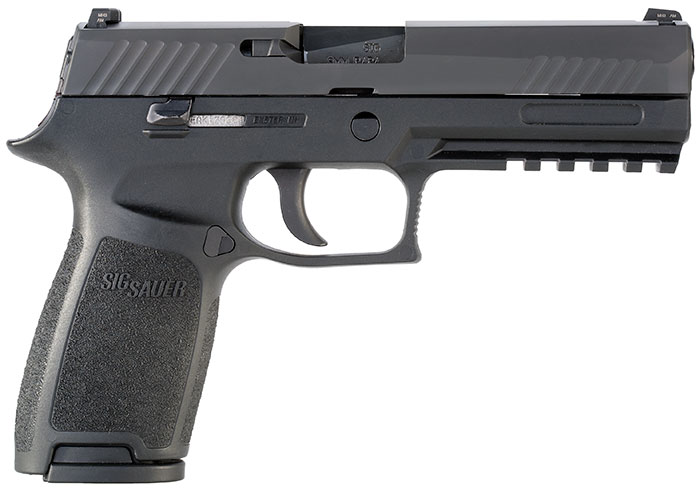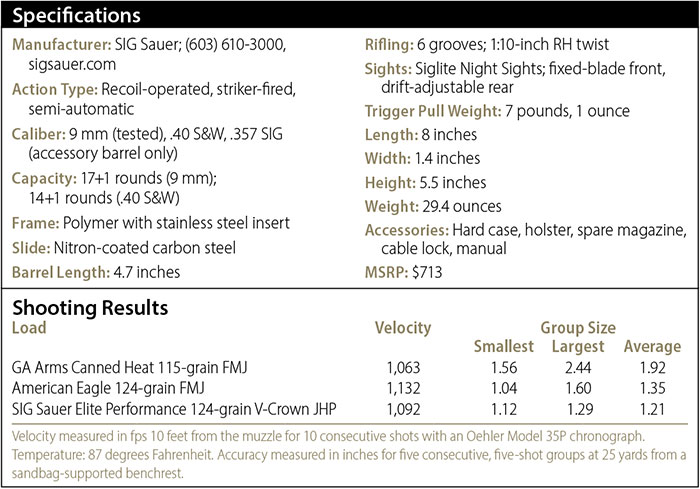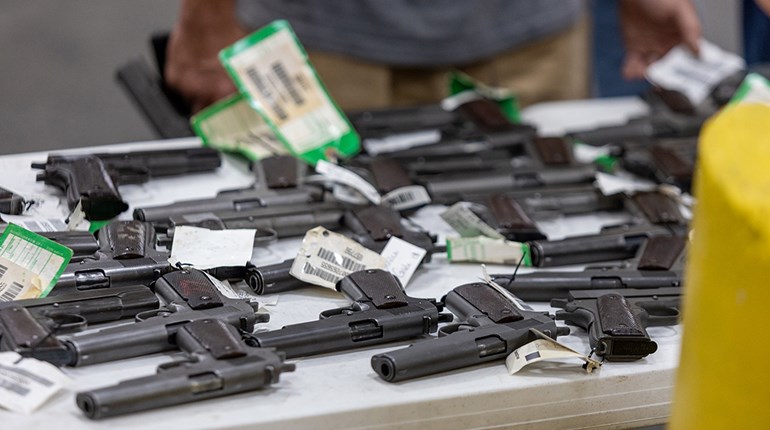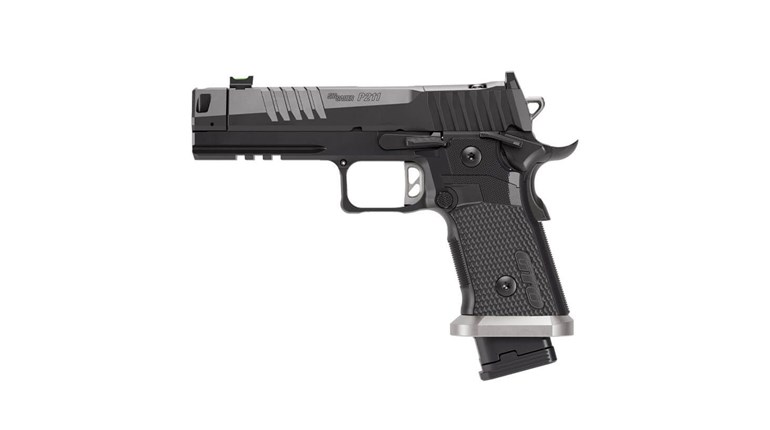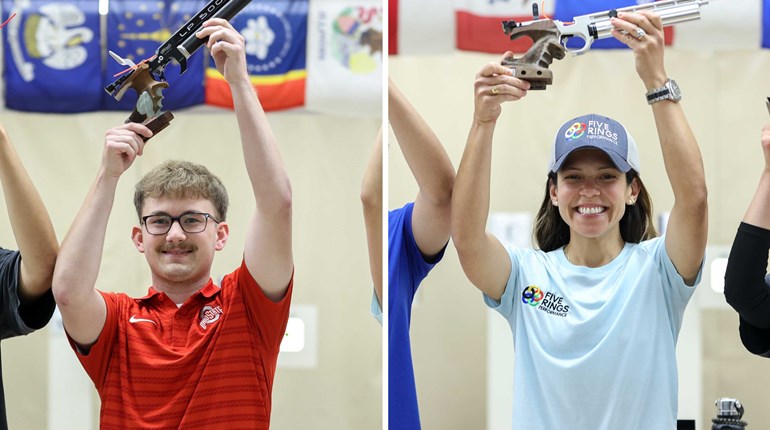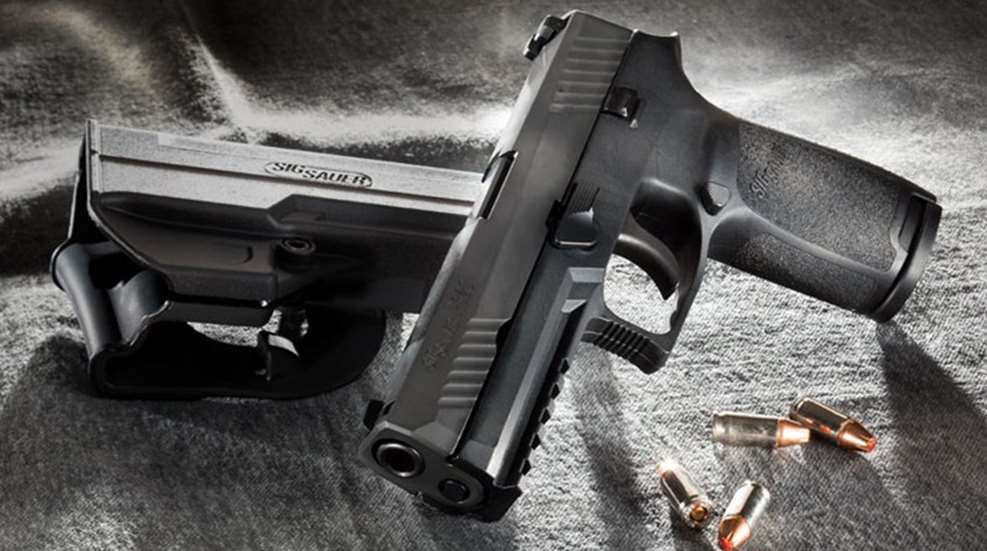
Shooters in the U.S. became familiar with the SIG Sauer P220 series of handguns when the original design hit our shores in the late 1970s. During the intervening years, we were introduced to the P225, P226, P228 and the P229 as the flagship handgun of the SIG line expanded and contracted into various designs and chamberings.
Candidly though, other than varying dimensions, different cartridges, optional finishes and features like double-action-only (DAO) and double-action-Kellerman (DAK) triggers, not much has changed from the original P220 design. The vast majority of SIGs have been steel- or aluminum-frame handguns with exposed hammers and nothing but grip panels available when it came to suiting guns to individual shooters.
With the introduction of the company’s latest addition, the P320, all of that goes out the window. Made in the company’s New Hampshire facility, this modular, striker-fired pistol is a stark departure from more than 30 years of handgun tradition.
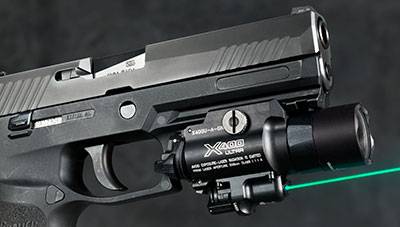
There are a lot of truly different features on the P320. The most outwardly unique aspect of this pistol is the grip frame, which we’ve come to accept as the handgun’s core. On the P320, it is merely a hollow shell of molded polymer. All of the internal working parts—what SIG Sauer calls the “fire-control assembly”—are housed in a single, serialized stainless steel unit that detaches from the frame in seconds. This allows the user to change the entire grip frame to suit his or her individual body size or unique mission requirements.
Law enforcement agencies can purchase the P320 knowing it can be easily and affordably modified to three different frame sizes to suit the largest and smallest officer on the force (and everyone in between), without needing an armorer. Likewise, if a duty-size handgun needs to become more concealable, the standard P320 grip frame and slide assembly can be quickly swapped for the carry model, which features a shorter barrel and more-compact frame. The P320 can also be readily converted between chamberings, from 9 mm to .40 S&W or .357 SIG, using the same process.
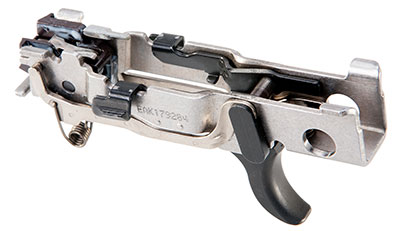
From a logistical standpoint, the pistol makes a great deal of sense for an agency and can provide lots of options for the individual consumer, particularly in jurisdictions where registration requirements make owning or carrying numerous handguns difficult.
There’s one other advantage to being able to swap grip frames easily: it has become popular among owners of polymer-frame handguns to use grinding wheels, sandpaper and wood-burning kits to customize the grip for a perfect fit. With most frames, you get one shot at this—if you mess-up, you’ve just ruined your handgun. With the P320, you can always order another frame—at a reasonable price—and start anew.
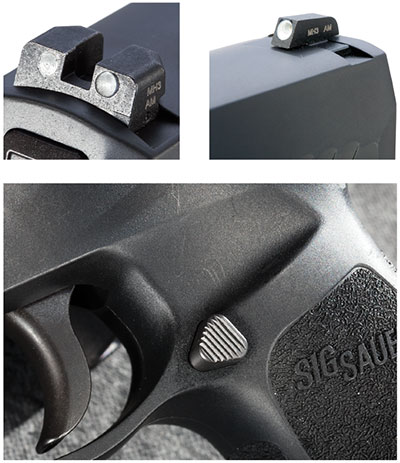
So, how does the P320 differ from the P250? While the P250 shares the P320’s modularity, it is a traditional double-action-only system with a spurless hammer and a long trigger pull. The P320, on the other hand, is a striker-fired handgun. Unlike all of the other handguns in the P220 series—which use either traditional double-action or double-action-only (DAO) triggers—the P320 has a short and consistent trigger pull with a short, positive reset.
My biggest gripe with SIG pistols has always been their triggers—not only is the DA/SA trigger difficult to master, shooters accustomed to other designs can actually “miss” the reset by short-stroking the trigger, a really bad thing in a gunfight. The P320’s trigger has a tiny bit of take-up before hitting a wall and breaking at 7 pounds. I measured the trigger’s reset at just shorter than .1 inch, which is pretty dang short. I can’t see myself missing this one. Shooters who have fought through the long DA trigger pulls of SIGs in the past will appreciate the trigger on the P320.

The P320’s controls are simple, minimal and ambidextrous. Since there is no hammer, the familiar de-cocking lever is absent from its frame. The only controls on the handgun are a reversible frame-mounted magazine release, a fully ambidextrous slide-stop lever and a reversible takedown lever. Having recently suffered through scores of weak-hand reloads at Rogers Shooting School, I can now fully appreciate a slide stop on both sides of the frame.
The grip itself has some pretty aggressive stippling, which I like, and a molded accessory rail on the dustcover is present for mounting a light and/or a laser. My only real complaint about the controls is the takedown lever is placed squarely where my weak-hand thumb likes to ride the frame. I’d consider reversing the takedown lever to the right side of the frame to get it out of my way. One of the pistol’s features I really like is the cutouts on either side of the frame, which allow the magazine to be stripped forcefully from the frame when necessary, such as when correcting a double-feed. Speaking of magazines, steel versions with polymer base plates ship with the pistol.
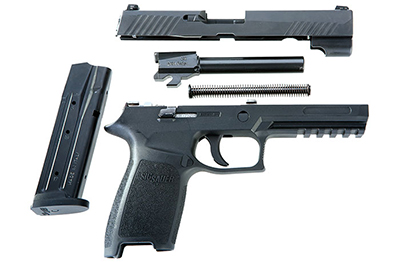
Disassembly of the P320 could win a prize for “easiest on the market.” The slide is locked to the rear, the magazine is removed and the takedown lever is rotated 90 degrees south. The slide is then removed from the frame and the barrel and recoil spring assembly are removed—fieldstrip done. To remove the frame assembly from the grip, the user pulls the takedown lever while twisting it out of the frame. The frame assembly rocks easily out of the grip for cleaning or to change configurations. The process is reversed to reassemble the handgun, and it really is as easy as it sounds. Disassembly does not require pulling the trigger, a fact the company rightfully touts as a safety feature.
As safeties go, the P320 incorporates several, but there is no manual safety on the handgun. The standard trigger can be replaced with a “safety tab” trigger, but the tabbed model is not necessary for the pistol to be drop-safe. A slide-mounted striker safety prevents it from firing unless the trigger is pulled, and a disconnector in the frame prevents the P320 from firing out-of-battery. The extractor doubles as a visual and tactile loaded-chamber indicator.
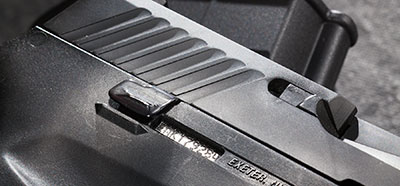
The top of the P320 uses a Nitron-coated, carbon-steel slide and a 4.7-inch hammer-forged steel barrel. Operation of the pistol is a traditional Browning tilting-barrel configuration, which mirrors other full-size SIG Sauer pistols. The recoil spring is a captive flat-coil design, as opposed to the coil spring found on most of the company’s handguns. Designed as a duty pistol, the P320 comes standard with steel Siglite Night Sights, which add about $100 of value right off the bat. Initially, the P320 is being offered in 9 mm and .40 S&W, and models in both chamberings are dimensionally identical other than the size of the bore and magazine capacity.
My production sample used the medium grip frame, which is probably about right for the majority of users and fit my average-size hands pretty well. The P320 is a fairly large handgun, with an overall length of 8 inches and a weight of 29 ounces with an empty mag seated. It is definitely scaled for duty-holster use. Were I looking at it for concealed carry, I’d opt for the Compact model, keeping in mind the entire handgun can be adapted to any available configuration.
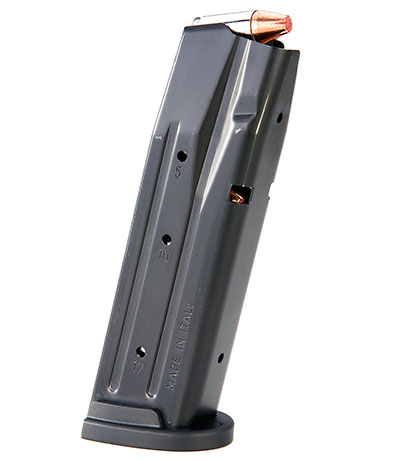
The P320 is loaded and operated like any other striker-fired handgun on the market. It’s a simple pistol to operate and would lend itself well to training groups of shooters at one time. With a good trigger, good sights and grips adaptable to suit different shooters, it’s easy to shoot well. I’ve fired plenty of SIG Sauer handguns over the years, so shooting one with the short reset and simple mechanics of a striker-fired gun was interesting. Using the basic-but-serviceable polymer holster that came with the gun, I ran the P320 through some standard self-defense drills to get a feel for it. Even though I’d fired 2,500 rounds through a different handgun the week prior, I adapted quickly to the P320’s rhythm.
My overall complaint about the P320 is a net that I’ll cast over nearly every SIG pistol: a bore axis that results in more muzzle flip than necessary. This isn’t the end of the world, but it’s one of my pet peeves. At least you don’t have to worry about the slide biting your hand. The P320 was shootable and mechanically accurate, with good hits made easily on both the close-in IPSC targets and the 25-yard bullseyes used for formal accuracy testing. It functioned with 100-percent reliability throughout testing, while being fed various types of ammo.
The P320 makes a heck of a lot of sense for law enforcement agencies, where a single firearm can be adapted for a variety of uses by a host of users. Individuals looking for a versatile handgun that combines multiple configurations and chamberings with a single serial number would be hard-pressed to find a more adaptive semi-automatic platform. This SIG breaks away from the company’s long tradition in favor of the simplicity enthusiastically adopted by both police agencies and the general shooting public. The P320’s striker-fired operation and short trigger reset put it in contention with any of its peers in the marketplace. I’d say SIG Sauer hit its mark with the P320.
